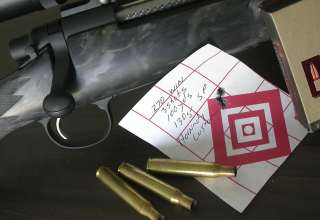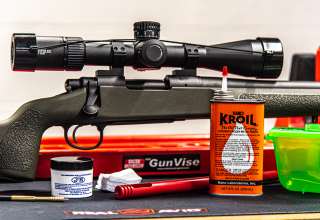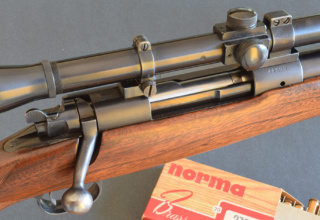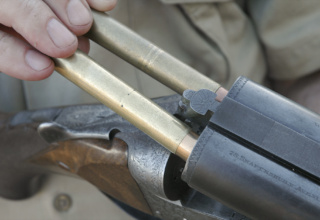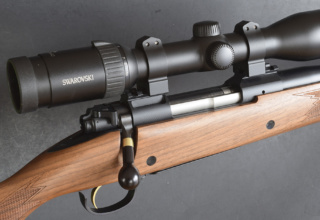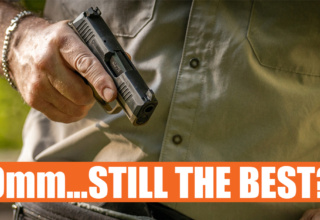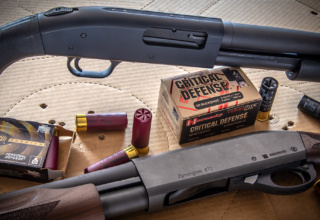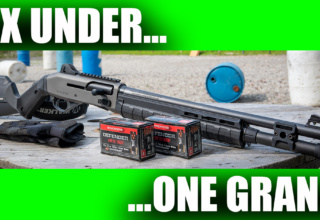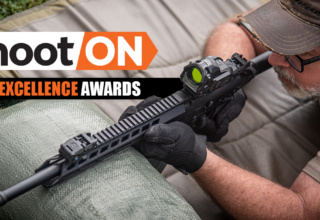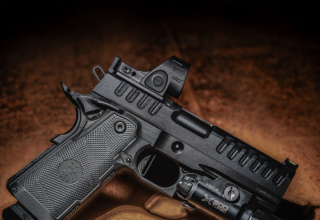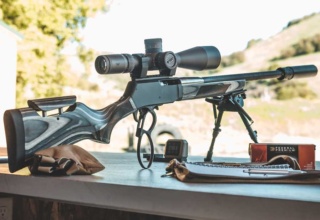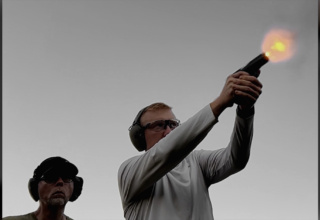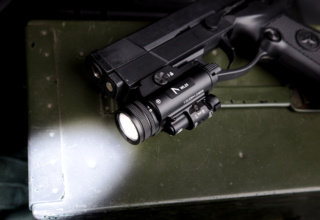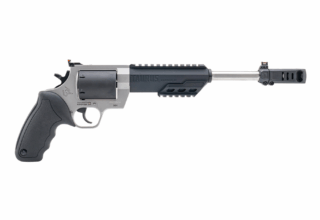One-hole groups and pocked plates at four-figure yardage shame hunting rifles of yesteryear. Or do they? Perhaps highly accurate rifles aren’t really the benchmark in the field…
by Wayne van Zwoll
It was a communal effort. Veteran wind-callers manned laser rangefinders and big-eyed spotting scopes. Ballistics programs spun out drift and hold-over values. The rifle, barreled to a .375 cartridge with a case the size of a pill bottle, wore a Nightforce scope with enough dial-up to keep the target in the field of view where bullet drop approached the height of a two-story house.
The 3-foot target subtended only about a minute of angle at 3,600 yards.
After spending more than six seconds aloft, the first bullet missed. So did another. Eventually the plate shuddered. I can’t say if the hit was audible from the line or if a lineal spurt of dust fronted the plate. But the strike was easily confirmed. So, too, later hits on similar targets at 3,800 and 4,200 yards.
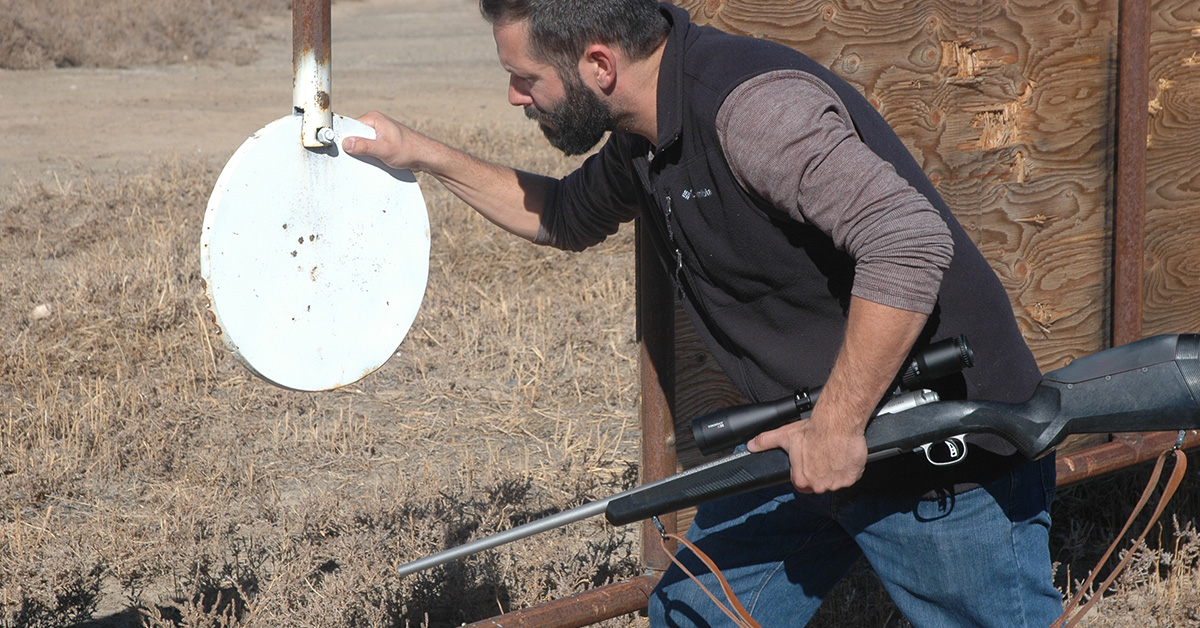
A rifle that hits even occasionally at such distances is costly and ponderous and kicks hard. To be fair, it’s also a credit to the current state of gunmaking, optics, and handloads. Minute of angle precision at two miles! No matter that several misses attend every hit.
Accurate rifles in my youth were heavy, too; but these, for Bench Rest matches, fired the likes of the .222 Remington to nip tiny groups at 200 yards. Scaling up actions, barrels, and scopes to direct bullets as heavy as guilt and longer than muskellunge lures is both a challenge and, now, a cottage industry. The flattest arcs bend so steeply beyond even 1,500 yards, elevation dials of many target scopes strain to keep the mark in the field. Firing is a violent event, blast and recoil affecting components and shooters alike.
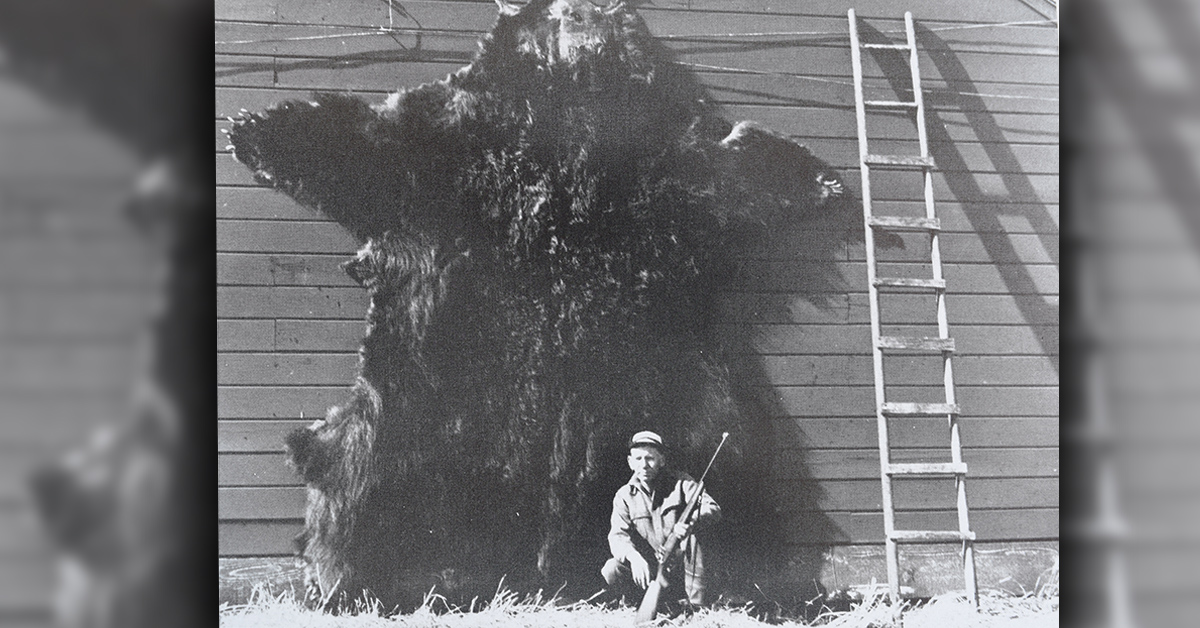
Still, banging plates out yonder with rifles and cartridges that can also hunt has become popular. Compromises remind me of when Metallic Silhouette shooting migrated from Mexico in the 1970s. The first Silhouette shoot I attended was won by a fellow firing a standard .30-06 Winchester Model 70 with a Weaver K4 scope. I fared quite well with a .270 on a Mauser action under a 6x Pecar. But soon thereafter the sport’s rural roots blurred as shooters fashioned rifles and handloads to win at that game, pushing the weight limits of their .308s and installing match triggers.
Toppling life-size chickens at 200 meters might seem child’s play compared to pounding 6-inch plates at 600. The difference is that Metallic Silhouette shooters fire offhand. Most long-range shooting games are conducted prone off bipods, where more depends on rifle and load than on raw marksmanship.
In 1957, the March and April issues of American Rifleman carried a two-part article by Townsend Whelen. Its title, “Only Accurate Rifles Are Interesting,” became a trope, parroted proudly by anyone with a dime-size group to post above his loading bench. Born in 1877, Whelen had missed the post-Civil War migration west, the near-extermination of the buffalo, and the subjugation of the last plains tribes to resist Manifest Destiny. The year before his christening, Gen. George Custer’s cavalry had wilted under swarms of warriors above the Little Bighorn River. James Butler “Wild Bill” Hickok had been shot dead at a card table. Citizen gunfire had minced the James-Younger gang during an aborted bank robbery.

Like Theodore Roosevelt, 19 years his senior, Whelen was born to privilege. He used it mainly to fuel a life of adventure. While Roosevelt bought and worked ranches in Dakota Territory, young Whelen explored the wilds of British Columbia on hunting trips. Both esteemed lever-action rifles.
Whelen was especially fond of his Winchester 1895 in .40-72. It treated him well afield. But he delighted in the wand-like pointing qualities of his Model 94 .30-30. He viewed the .303 Savage with its heavier 190-grain bullet as the superior “killing cartridge,” writing that W.G.C. Manson of Lilooet, B.C. had “accounted for 18 head of large game, including two grizzlies” with his first box of .303 cartridges. Whelen set reasonable standards for hunting-rifle accuracy. Seven-inch groups from .30-30s and .303 Savages at 200 yards pleased him.
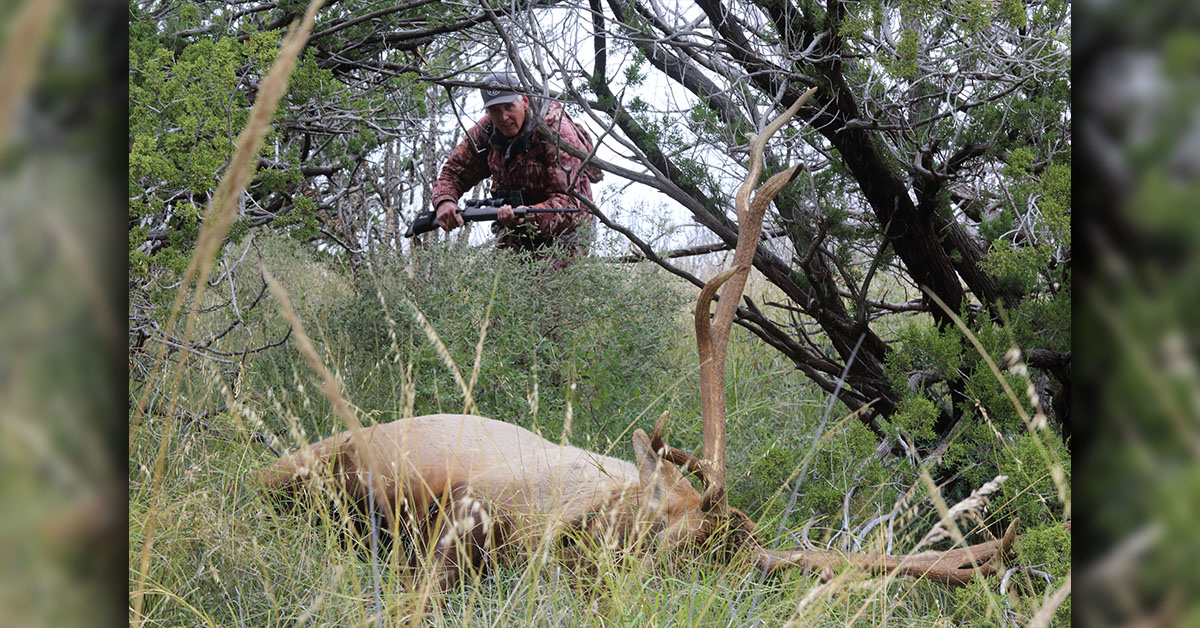
Whelen’s family roots ran deep into soldiering. He joined the U.S. Army after his well-positioned father introduced him to President Roosevelt. Whelen trained soldiers in marksmanship, practicing what he preached and writing about it. “Accuracy is the most important quality in a rifle,” he stated in his book, The American Rifle (The Century Co., New York, 1918). “If the rifle is inaccurate, it is worthless.” At that time, he’d weaned himself from the Krag-Jorgensen to take up with the 1903 Springfield.
Whelen’s words still make sense: A bullet that misses its mark avails nothing. What has changed over the last century are measures of acceptable accuracy, and how much precision hunters want to leave to the rifle, sights, and loads.
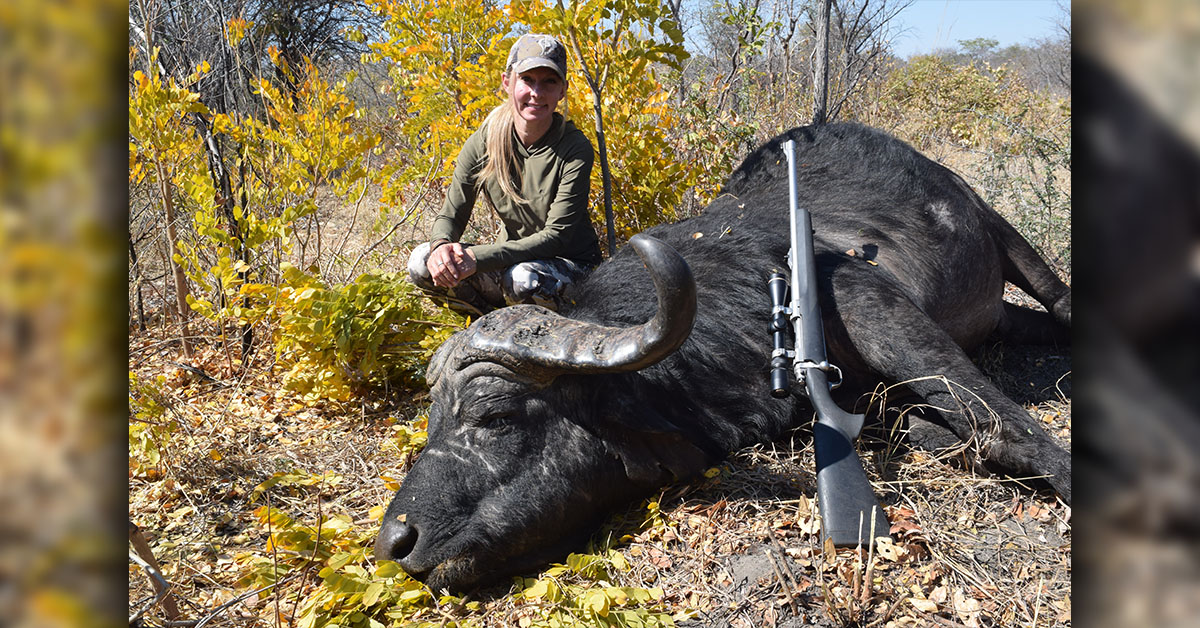
The bar for acceptable field accuracy was pretty low in 1843, when adventurer Ronaleyn Gordon-Cumming sailed to Africa to seek a fortune in ivory. Breech pressures — and velocities — were limited by black powder and mild steels. To add punch, hunters used bigger projectiles. Cumming’s 4-bore muzzleloader firing 4-ounce (1,750-grain) balls downed 105 elephants; but only one fell to a single shot! Credit the durability of the beasts and the poor penetration of lead balls. Such dismal results were common: “I laid him low with about 20 bullets.” A durable bull took 35 hits from a 10-bore rifle, then five more from a 6-bore. Another was struck 27 times “in a very correct part,” collapsing after the 29th shot. The great weight of 4-bores (to 21 pounds) and their long barrels (to 36 inches) made them unwieldy at best.
Practical accuracy afield, as historically in battle, has little to do with rifle accuracy. Few hunts or conflicts have turned on the size of a five-shot group. What matters are on-torso hits and fast repeat shots in the stress of the moment from positions imposed by time, cover, and terrain. This was so long before the advent of repeating rifles. In 1861, applicants for Union Colonel Hiram Berdan’s Sharpshooters had to place “10 bullets in succession within five inches [of] center” from 200 yards off a rest or from 100 yards standing. Open sights, of course!
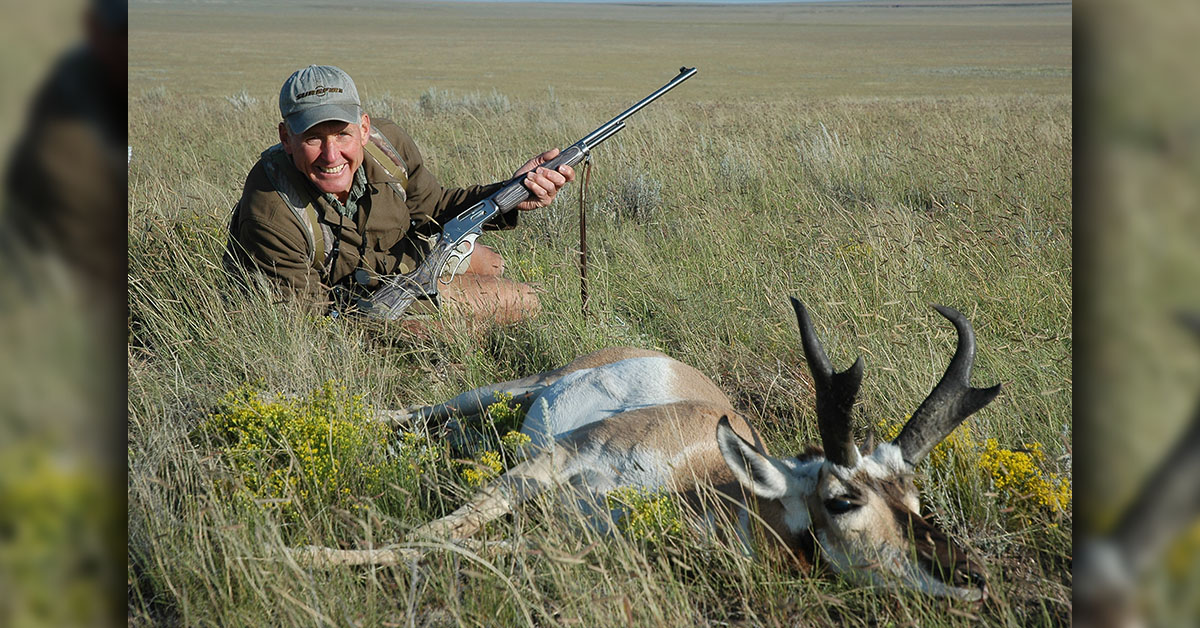
No exam was imposed on William F. Cody when, after serving in the 7th Kansas Cavalry during the Civil War and later as civilian scout, he posted to Fort Ellsworth, Kansas. But his work there, hunting buffalo for the Army and the Union Pacific, also hinged more on rifle handling than on rifle accuracy.
“Buffalo Bill, Buffalo Bill. Never missed and never will. Always aims and shoots to kill. And the company pays his buffalo bill!” Attributed to rail crews, that ditty confirmed a nickname he was proud to own. But did he miss? On his favorite horse Brigham, he rode close to buffalo. Hitting vitals bigger than watermelons would have been easy. But firing his single-shot .50/70 Trapdoor Springfield horseback into beasts dodging in braided rivers through dust over rough prairie, Cody could hardly kill with every bullet. His tally of 4,280 buffalo in 18 months, 1867 into ’68, is more a credit to his ambition, horsemanship, and endurance than to his shooting. The accuracy of “Lucretia Borgia” played a minor role.
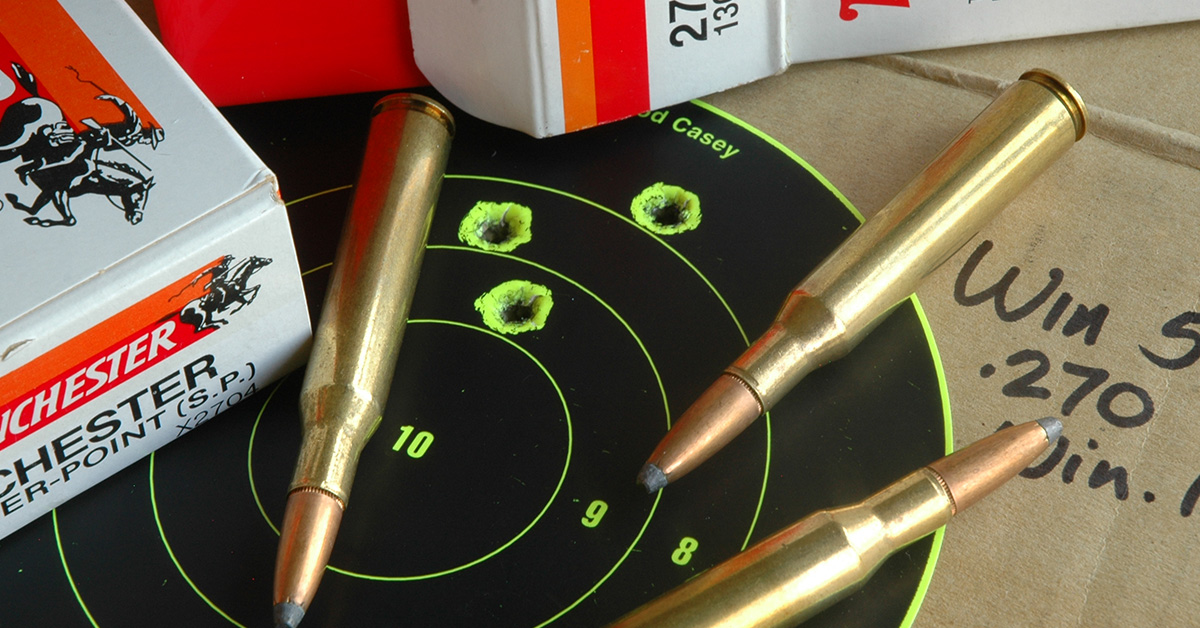
Cody’s rifle had much in common with the Hawken rifle birthed in St. Louis, a beefier version of the svelte “Kentucky” flintlocks fashioned by German gun-makers in Lancaster County, Pennsylvania. A typical Hawken weighed 10 pounds with a 38-inch, .50-caliber barrel of soft iron and slow rifling pitch. It fired the heavy patched balls needed for bison and grizzlies. During the fur trade of the 1820s and into the California gold rush, demand for Hawken rifles grew. In 1849, a basic Hawken rifle fetched $22.50.
Most striking on an original Hawken I examined was the mid-section of its stock, worn through to the barrel. Carried on its balance point across a pommel, it had endured many saddle miles. That rifle was also linear. Despite its unadorned muscle, it had a lean, carnivorous profile — a form carried forward to Cody’s breech-loading 1873 Springfield, and Sharps and Remington single-shots. Lever-action repeaters that followed the 1860 Henry also had slender grips, waists, and fore-stocks. They were easy to palm or to carry in the crook of the arm. Winchesters, Marlins, and Savages marking the advent of smokeless powder came alive in hand. They didn’t fill hands, they responded to light cradling. Light finger pressure, a twitch of the palm refined aim.
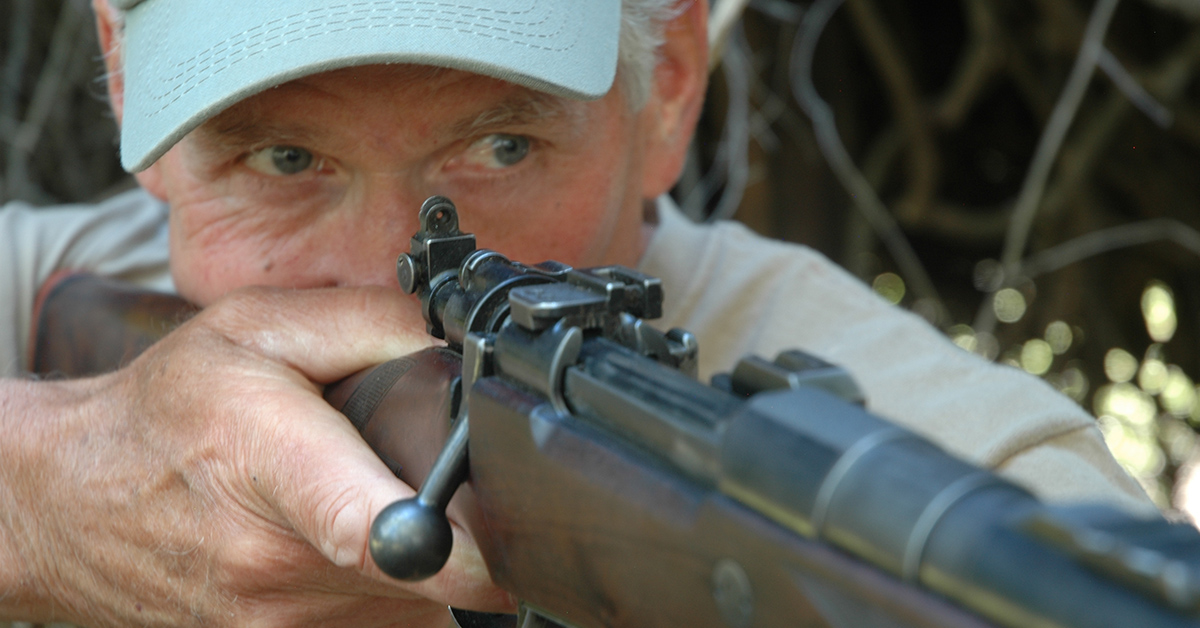
“When you don’t have to carry a rifle or hold it on target, you can afford one-hole precision,” an aging woodsman once observed. He wasn’t dismissing the assist hunters can get from accurate rifles. His point: most game is killed with rifles of mediocre accuracy. “Most game is missed by rifles that would kill if they were properly aimed.”
I can think of only two shots in my time afield that required better than 1 ½-minute accuracy from the rifle and load. I’m convinced none of the game I’ve missed escaped because my rifle shot poorly.
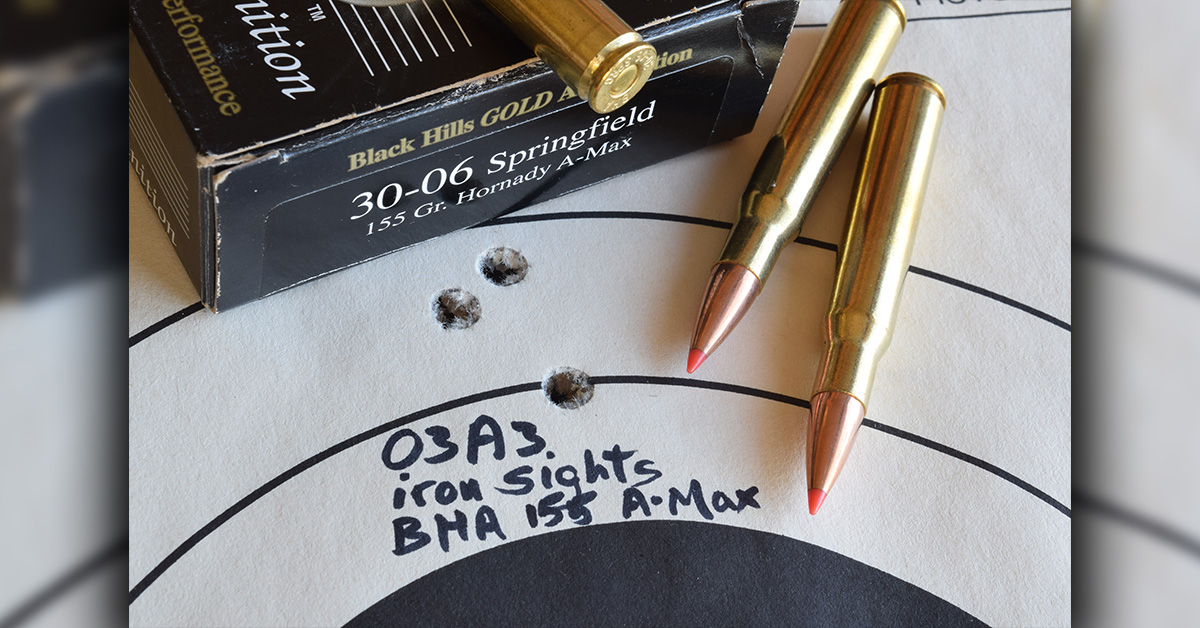
Whelen’s final inventory of 31 rifles included just three for bullseye competition — though several sporters had “varmint-weight” barrels. He valued accuracy most in rifles suited to hunting. His Griffin & Howe Springfield with star-gauged barrel and 4x Lyman scope excelled with 180-grain Sierra handloads: “Five-shot groups ran from .70 to 1.30 inches,” for a .92 average. A Winchester 70 Varmint in .243 under a 10x Unertl scope put 75-grain Sierras into groups of .40 to 1.00 inch. An 1885 Winchester single-shot in .219 Improved Zipper nipped sub-minute groups with 52-grain Speers. A Model 70 .22 Hornet re-lined to .22-3000 R2 then re-chambered to .222 averaged .756 for five five-shot groups with a 6x Bear Cub scope.
In 1960, a year before his passing, Whelen sponsored a St. Louis Bench Rest match for .25-bore-and-larger rifles. Art Freund won it with Whelen’s Neidner-barreled Springfield in .257 Roberts. His five-shot knot at 200 yards measured barely over an inch. For all that, Whelen wrote forthrightly about rifles with less than stellar accuracy, even the Krag he used shooting for the Army team in 1903, ’05, ’06, and ’07. The best it would shoot with a new Winchester nickel-steel barrel in 1909 was 3 MOA. When serving at Springfield Armory in 1929, Whelen decided “to have made up the finest .30-06 Springfield hunting rifle that it was possible to construct.” He waited six months for the barrel and put it on an un-numbered 1903 action heat-treated by G&H. The rifle shot “pretty consistently into 1.25 m.o.a.”
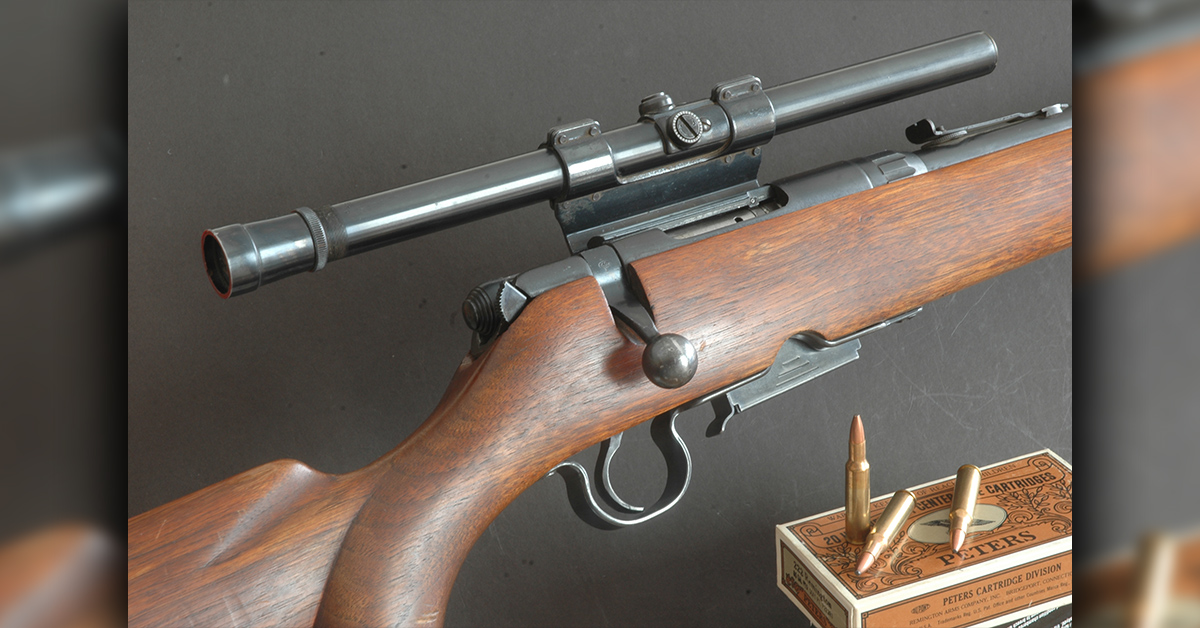
Across from my desk stands a tired 03A3 Springfield, a nail repairing its cracked wrist. It turned up as an orphan, refusing to eject. It cycles reliably now. It is cosmetically rough; but Black Hills Match loads have punched walnut-size groups at 100 yards — as close as I can hold with its issue sights.
A rifle rides my shoulder or the crook of my arm for hours to earn a shot on a hunt. So, it must be comfy on the carry. Slender. Linear. No steep angles or sharp corners. Balanced, as if it had a brain and of suitable weight for the cartridge — say, 6 ½ to 8 ½ pounds with a trim scope hunkered low. It must cheek eagerly, crosswire settling where I’m looking.
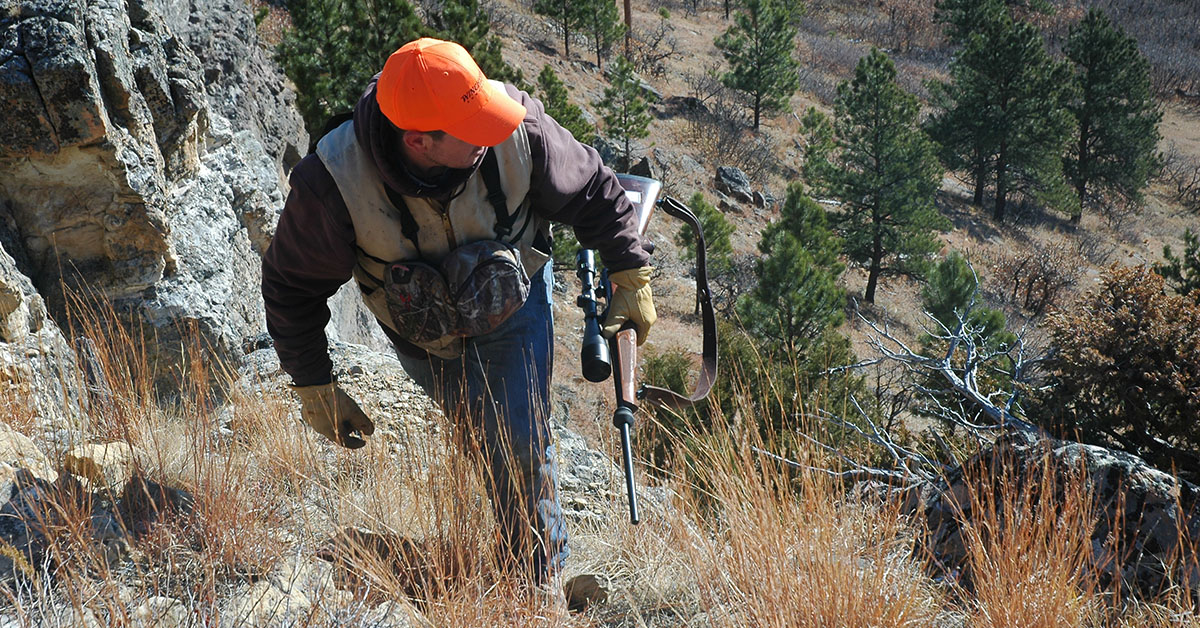
Many rifles and optics qualify; but of recent pairings, I like the Cooper rifle in my rack. A .270, it carries a Swarovski Z5+ 2-10×42 scope and a Brownells Latigo sling.
Choices, choices. What matters is how quickly and consistently this rifle puts its bullets on target. Not in the previous bullet hole. Just acceptably close.


